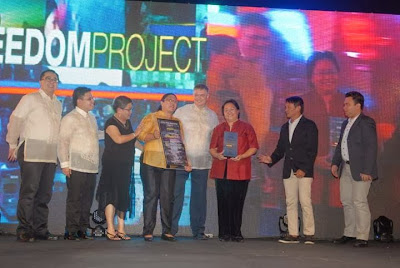* This is my article today in
Mining Week.
------------
* Hundreds of small-scale mines in Mt. Diwata (or “Mt.
Diwalwal”), Monkayo, Compostela Valley, Mindanao. One person sold 5.49 grams of gold in his hand - his
share of the day's output - for 8,260 pesos ($200). That's more than 16 times
what a manual laborer earns daily in Manila.
* Up to 90 percent of small-scale Philippine gold
production is being smuggled out, much of it to China.
Potential revenue loss is big.
* The Philippines, the world's 18th largest gold miner,
produced just over 1 million troy ounces of gold in 2011, worth $1.6 billion at
current prices. About 56 percent of that came from small-scale miners.
* A top central bank official told Reuters new taxes on
gold sales imposed last year appear to be a key factor in the alarming rise in
gold smuggling.
* “All the production of small-scale mines, almost all,
now goes to the black market, because there is no tax in the black
market," said Rex Banggawan, an accountant for a small-scale mining
cooperative that buys and sells gold in the mountain city of Baguio in northern
Philippines. "After that, smuggling is automatic."
* Arthur Uy, Governor of Compostela Valley, the top
small-scale gold mining province in the Philippines, said the black market in
gold is mainly based in the capital, Manila. "Most of the gold is being
smuggled out to Hong Kong, that's the biggest market," said Uy, a two-term
governor.
* The amount of gold sold by small-scale miners and
traders to the Philippine central bank in the second quarter plunged 98 percent
from a year earlier. By law, all gold produced by miners in the Philippines
should be sold to the central bank at around world market prices. Small-scale
gold mining output, is the main source of the central bank's gold reserves,
which hit a record high of $10.4 billion early this year.
* Traders and officials say the biggest factor behind the
spike in the gold smuggling trend the past year is a 2 percent excise tax and a
5 percent withholding tax approved in 2008 but which the Bureau of Internal
Revenue (BIR) only started enforcing last year. The tax is imposed on gold
sales to the central bank, so is usually borne by the traders.
* Tagum city, the provincial capital of Davao del Norte,
is the biggest gold-buying centre nearest to Mount Diwata. Gold traders in
Tagum say if not for the tax, they would rather sell to the central bank than
in the black market where prices fluctuate fast.
----------
This development is what the public, the militant
anti-mining environmentalists included, ironically get. A case of “adverse
selection” problem in Economics. The things that they do not want to hear and
see are what they get. When large-scale and
corporate mining is demonized, these firms that cannot avoid paying various
taxes, fees and royalties because they are large enough to hide behind the mob,
the firms that must comply with Mines and Geosciences Bureau (MGB-DENR)
requirements and LGU regulations on giving various CSR projects to communities,
then less corporate mining will happen.
Many local politicians and businessmen who own the mines
can afford to be less caring of the mountain and the personnel.
One way to bridge the huge gap between large-scale
corporate mining and small-scale guerilla type mining, is to encourage the
latter to pool resources and become more transparent, more accountable, for
their activities. It can be in the form of mining cooperatives, or a hybrid of
corporate mining with lots of small holder investors.
When a business enterprise becomes big, like the
multinationals or local firms which have joint venture and corporate
partnership with multinationals, they are forced to become more transparent.
They have websites, their corporate officers are there, they report to the SEC,
BIR, MGB, LGUs. Often they are also listed in the stock market and hence, they
report publicly to their shareholders and potential share buyers. Then there is
the Extractive Industries Transparency Initiative (EITI) that both public and
private agencies must divulge and submit information.
With such multiple system of reporting to government
agencies, private investors and third party information reporting system, a
large scale mining firm cannot afford to be too secretive of its mineral
output, its tax payment and CSR projects.
Where there is more transparency, more accountability
follows. And less environmental destruction, less disregard for health and
labor regulations can be expected.
------------
See also:

































